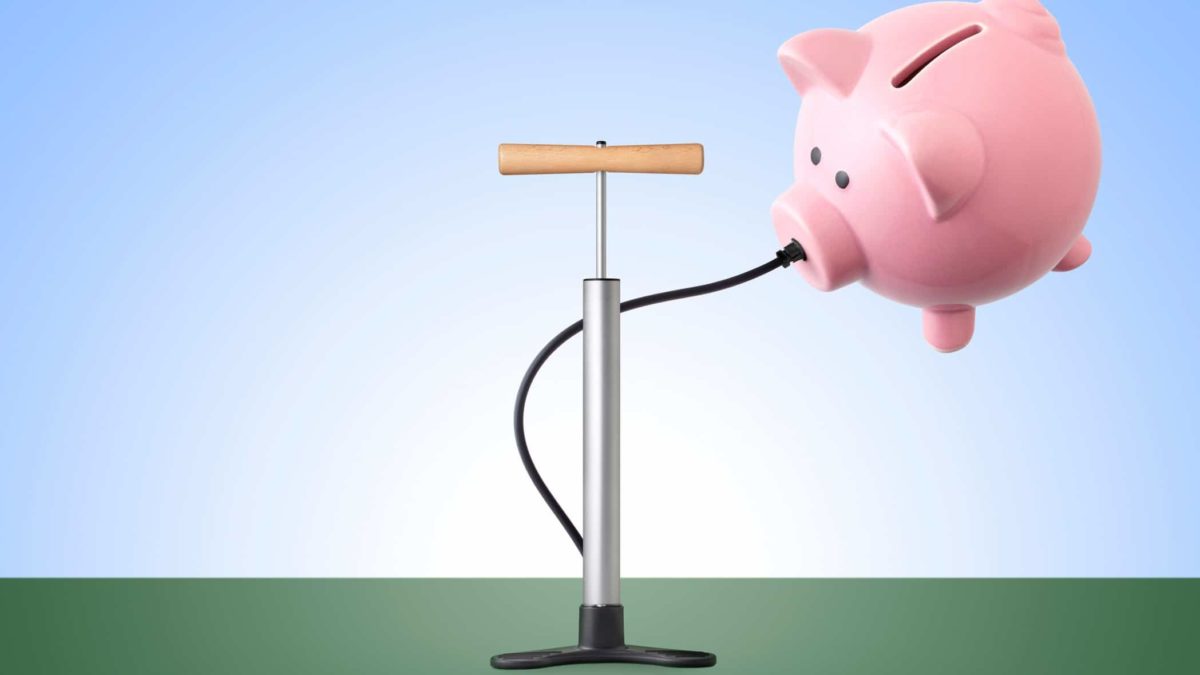ASX investors have been keeping a wary eye on inflation indicators.
And for good reason.
If inflation remains at or below the Reserve Bank of Australia's (RBA) target range of 2–3% on average, then investors can expect the official cash rate to remain at the current record low of 0.10% until 2024. Or perhaps longer.
Moreover, if inflation begins to run hot on the back of massive government spending and central bank quantitative easing (QE) programs intended to lift economies from their COVID slowdowns, then official interest rates may rise sooner.
Inflation expectations differ
Precisely when inflation and interest rates are expected to move higher depends on who you ask.
Central banks the world over are largely united in proclaiming that any sustained increase in inflation is unlikely before 2024.
The price increases we are seeing today and likely to see over the coming months, they say, are transitory. Essentially that means price rises are being driven by temporary bottlenecks in labour and materials caused by the pandemic just as demand begins to surge.
These bottlenecks can remain in place for months after economies start opening back up…temporarily driving up prices until they're cleared.
The Australian government's budget forecasts that the consumer price index (CPI) will come in around 2.25% by mid-2023. That figure is well within the RBA's target range.
The RBA has a similar view, writing, "Despite the stronger outlook for output and the labour market, inflation and wages growth are expected to remain low, picking up only gradually."
Industry commentary
Gareth Aird, head of Australian Economics at Commonwealth Bank of Australia (ASX: CBA) doesn't believe wages growth is going to be quite that gradual.
According to Aird (quoted by Bloomberg):
If you're trying to achieve higher wages and higher inflation, what you need is things like capacity utilisation at elevated levels, you need lots of skills shortages so that you've got a better chance of wages coming through. Everything looks like it's moving in the right direction on that front.
Aird said "the forward-looking indicators of labour demand are as strong as we've seen them in a long, long time". Hence, CBA's expectations for wags and inflation "is running ahead of what the RBA is saying".
Speaking of skills shortages in Australia, a labour crunch appears to be popping up. It is observable from the ski slopes to the beachfront coffee shops to the outback mines.
This excerpt from Bloomberg helps explain why:
Australians each year spend about A$20 billion… more abroad than international tourists do Down Under – money that's now being spent locally as the border remains shut to keep out Covid-19. Also locked out are the around 15% of the labor supply in hospitality and food trades that are usually drawn from overseas workers.
Which ASX shares have the most to fear from higher rates?
The inflation and interest rate question really comes down to a matter of degree.
If inflation is within the RBA's target range or even slightly above, any interest rate rises will likely remain subdued. Furthermore, this would occur without majorly impacting ASX shares.
But what if inflation begins to run hot following the past year's unprecedented fiscal and monetary largesse? Then we could be in for some larger rate rises which will impact the ASX.
Though not all shares will feel the pain equally.
According to Wentworth Williamson fund manager James Williamson (quoted by the Australian Financial Review):
The higher-priced companies have dropped recently because you're heading towards a world of interest rates heading off the lows. If you're looking at a world where the cost of capital is rising, it's terrible for these very high priced companies that don't make a lot of money.
ASX banks shares are often pointed to as likely to do better in a world of rising rates. While ASX tech shares, more heavily dependent on future earnings, are generally expected to struggle. In particular if they are faced with a higher present cost of money.









